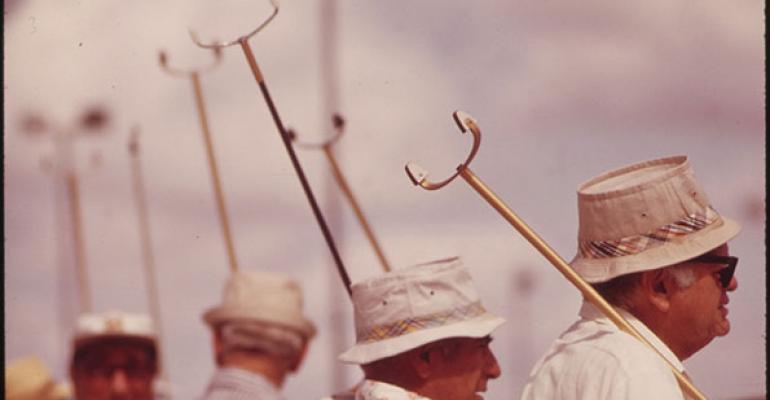(Bloomberg) -- Here’s a little self-care gift that costs nothing and has a big payoff: Time spent making sure you’re saving in the smartest ways, for retirement or other long-term goals.
While finding extra money to save is tough for many people now, with holiday expenses heaped onto higher living costs, there are many ways to set the stage for a stronger financial future.
Here’s a checklist of money moves to consider in 2024.
Get the Match
You’ve heard it before but it’s worth saying again: If you’re in a company 401(k) plan and it offers a match on your contributions, try to contribute enough to get the full match. It is literally free money.
Many companies match contributions to a degree. The most common matching formula for plans at Fidelity Investments is dollar for dollar up to 3% of pre-tax salary, then 50% of each dollar up to another 2% of salary.
That formula leaves an employee with a 4% match on top of their 5% contribution — a 9% savings rate. That’s below the 15% Fidelity recommends as a goal, but it’s a great start.
“Keep in mind that the match is not the max,” suggests financial planner Ryan Frailich of Deliberate Finances. “Too often people get the match and stop there.”
Build Emergency Savings
At the same time, building up emergency savings can help you keep gains in retirement accounts compounding tax-free over the long haul.
“It’s important to have that as a resource, because if unforeseen circumstances happen you don’t want to have to pull money out of retirement savings,” said Mindy Yu, director of investing at Betterment.
“You want your money to have that time in the market and to avoid unnecessary penalties for pulling money out” before it’s allowed, said Yu. In most cases, on top of paying income tax on that money you’ll pay a 10% penalty for withdrawing it before age 59 ½.
If you have a Roth account — more on those a little later — you can withdraw the money you put in without penalty before 59 ½. But any earnings on that money must stay in the account until you’ve held it for five years and are 59 ½ to avoid possible taxes and a penalty. There are a few exceptions, including for buying a first home and college costs.
Engage Autopilot
Set up regular automatic deductions from checking into savings or investment accounts, even if it’s a small amount.
Part of the idea here is that sometimes what you don’t see in your checking account you don’t miss — and you can always lower the amount if it’s making finances too tight.
In addition, you can turn on your 401(k)’s auto-escalation feature. If you were auto-enrolled into a plan, your company may have already turned on that feature, which raises the percentage of salary you put into the plan by 1% a year. But you may need to log onto your plan’s site and elect to do that yourself.
Roll Over 401(k)s
If you leave a job and have a small 401(k) balance you’ll get a check from your plan’s administrator, and it’s tempting to spend it.
If you do, you’ll likely pay a 10% penalty if you’re younger than 59 ½ and don’t roll the amount into a new employer’s 401(k), or into an IRA, within 60 days. Rolling over a 401(k) can be a hassle, but new “auto-portability” services are starting up to more easily roll balances over to new employers.
Roth-ify
If you fit within the income limits to contribute to these accounts, consider opening a Roth account with after-tax money.
The big caveat: more taxable income now. But your tax rate later in life may not actually be lower than it was when you were working — and, of course, tax rates could go up.
Roth IRAs and 401(k)s are a great idea when you’re young, since your tax bracket rises with income. Longer term, Roths are good for diversifying the taxable status of retirement accounts. Retirees who have all their savings in traditional 401(k)s and IRAs, but no Roth account, won’t have much flexibility to manage their income in retirement to try and stay in a lower tax bracket.
Check on Fees
Look over fund expense ratios to make sure they’re not well above average and that cheaper fund options haven’t emerged. Fees paid on funds are a good predictor of future returns, according to Morningstar research. Morningstar’s annual fund fee study gives an idea of what reasonable fees would be on different categories of funds.
Fees on funds may be lower in a 401(k) than for outside accounts, since plan sponsors may negotiate them down. But there are other costs. If you’ve left a company but are keeping your 401(k) there, find out what you’re paying in total fees — administrative fees related to back-office functions such as recordkeeping and custody, as well as expenses on the funds in your account.
One of Frailich’s clients moved money from an old 401(k) with all-in fees of 0.8% over to Vanguard, and now only pays a 0.04% expense ratio. “Literally, the same Vanguard target-date fund cost 20 times as much in this 401(k) versus owning it directly in the IRA” because of the other costs of the client’s plan, said Frailich.
Consider Catch-Ups
If you're 50 or over, make extra catch-up contributions if you can. The additional amount older 401(k) savers can contribute in 2024 is $7,500. That’s on top of the maximum for regular contributions of $23,000 in 2024, so a total of $30,500 in tax-deferred savings.
For traditional IRAs, where the maximum allowed contribution is $7,000, savers 50 and older can put away another $1,000.
To contact the author of this story:
Suzanne Woolley in New York at [email protected]





